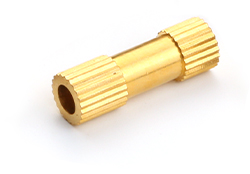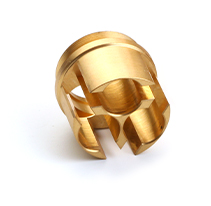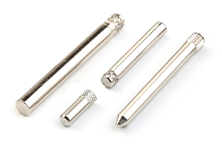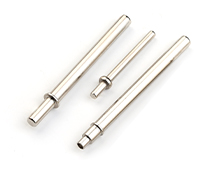1.Strength and Rigidity
Sufficient strength:In the process of CNC machining,the main CNC tools made of CNC aluminum alloy parts need to bear large cutting force and vibration.This requires the aluminum alloy material to have sufficient strength to ensure the stability of the tool in work and prolong the service life of the tool.This strength standard can effectively ensure that the parts are not easy to deform or damage in the processing and actual use stages. Good rigidity:Materials with good rigidity can better resist deformation in the cutting process,thus significantly improving the machining accuracy and stability,and providing strong support for the high-precision requirements of CNC machining. 2.Lightweight Aluminum alloy is a lightweight material.Compared with traditional materials such as steel,using aluminum alloy to make parts can significantly reduce the weight of parts.In practical application,this characteristic helps to reduce the load of machine tools,improve cutting efficiency,and reduce energy consumption,which is in line with the pursuit of high efficiency and energy saving in modern industry. 3.thermal conductivity CNC cutting tools will produce a lot of heat during high-speed cutting.If the thermal conductivity of the material is not good,the tool is prone to overheating,which has a negative impact on the cutting quality and shortens the tool life.Aluminum alloy,with its good thermal conductivity,can efficiently dissipate heat,maintain the stable working state of the tool,and ensure the smooth progress of the cutting process. 4.Corrosion resistance CNC aluminum alloy parts are often in contact with corrosive media such as cutting fluid in actual use.Therefore,aluminum alloy materials must have a certain degree of corrosion resistance in order to extend the service life of parts.Although the corrosion resistance of aluminum alloy itself is usually good,in some special environments,additional surface treatment may be needed to further improve its corrosion resistance. 5.machinability The aluminum alloy has good machinability,is easy to process and form,and can fully meet the requirements of high precision and high efficiency of numerical control processing.Its excellent cutting performance helps to reduce the processing time and reduce the processing cost,thus effectively improving the production efficiency,and has obvious advantages in large-scale production. 6.Selection of alloy elements The aluminum alloy used for CNC machining is not pure aluminum,but an alloy material containing a small amount of alloy elements.Aluminum alloy materials with different performance characteristics can be prepared by accurately adjusting the content of alloying elements.For example,the addition of silicon,manganese,magnesium,copper and zinc can improve the strength,hardness and corrosion resistance of aluminum alloy respectively,and meet the diverse needs of different application scenarios for the performance of aluminum alloy. 7.Other specific requirements
According to different applications and specific needs,the production of CNC aluminum alloy parts may also need to meet other specific requirements,such as high temperature resistance,wear resistance,fatigue resistance and so on.These special requirements require customized design and material selection according to the actual situation to ensure that the parts can operate reliably under specific working conditions.






 Return
Return